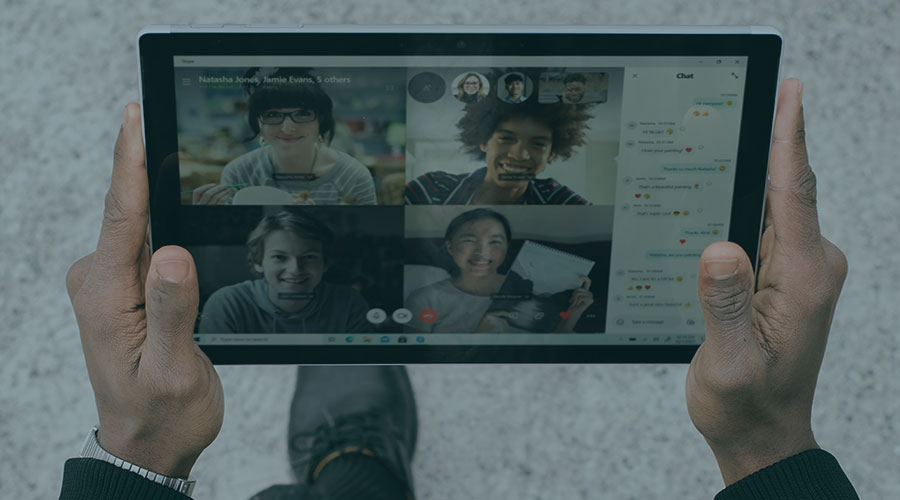Key Takeaways:
- Many communities around the world lack access to technology, digital literacy and a solid internet connection. This inequity is known as the global digital divide.
- The cause of the global digital divide is not limited to a single factor. It is the result of several factors, such as socioeconomic status, education, infrastructure and geography.
- The global digital divide is an important topic to discuss since it underscores the inequitable distribution of technology and broadband access worldwide.
In the turn of the century, a reliable internet connection has become essential for people to access critical information and communicate. However, many societies across the globe lack proper access to technology and a solid internet connection. This lack of equitable access is known as the global digital divide.
Below, we explore more about the global digital divide, including its importance and impact. In addition, we discuss several key ways to bridge the divide.
What Is the Global Digital Divide?
The digital divide is an overarching term that describes the lack of equitable access to technology, resources, digital literacy and the internet. The global digital divide highlights the variances in levels of technological advancement and access in developed and developing nations.
Countries or regions with better access to technology have greater social and economic advantages. That is because, without access to knowledge and tools on the internet, people cannot engage with the rest of the world as easily, nor can they obtain the information they need to better their position.
The global digital divide results from several factors, including socioeconomic status, education, infrastructure and geography. Some countries lack the infrastructure necessary to support bandwidth and electricity for widespread internet access. In addition, many struggle with education and digital literacy, while others simply lack the technology.
How Important Is the Global Digital Divide?
The global digital divide is an incredibly important topic to understand since it underscores the inequitable distribution of technology, broadband access and other resources in developed and developing nations across the world. When people lack access, it negatively impacts and perpetuates other health, professional and academic disparities. According to data published by the Brookings Institute, internet access across regions varies greatly. As of 2022, 89% of Europe, more than 80% of people in the Americas and 70% of residents of Middle Eastern countries have internet access. In comparison, just 61% of people in Asia and 40% of African countries have a reliable internet connection.


Get Industry leading insights from Robert F. Smith directly in your LinkedIn feed.
Get Industry leading insights from Robert F. Smith directly in your LinkedIn feed.
Impact of the Global Digital Divide
The global digital divide has daily and long-term consequences for communities worldwide. The data released by Brookings shows that about a third of the world — 2.7 billion people — did not have access to the internet in 2022, with 53% of the world’s population unable to use high-speed broadband. Consider the following three examples of global digital divide impacts.
1. Daily Life
Technology is used daily in many communities across the globe. That means that the digital divide permeates many aspects of daily life, from everyday tasks to jobs. These days, digital literacy is required for employment, with many jobs expecting employees or potential employees to have digital skills. Additionally, people without digital resources can miss out on job opportunities that are only available online or require a remote work set-up. This lack of access to technology and digital literacy work can prevent families from achieving a higher socioeconomic status.
Another way a lack of access to technology can impact daily life is through social connection. Technology connects people through digital messaging, video calls, social media and other community-oriented websites. On social media and other similar apps, for example, people can gain information about their loved ones and the world around them. Not being able to access social media can cause people to feel isolated and uninformed.
2. Education
Because the need for advanced technology in educational systems across the globe is increasing, digital literacy and access are starting to become critical components for in-person and distance learning. Communities without access to technology are at a disadvantage. Typically, this impacts lower socioeconomic communities the most because they are less likely to have equitable access to technology and resources.
Ultimately, the digital divide in education can have immediate and long-term ramifications. Students still in school need access to adequate technology. Otherwise, they may struggle to complete assignments, which could cause them to fall behind in their academic progress. Over time, the lack of progress too often leads to a failure to graduate. Given the importance of digital skills in the workforce, a lack of digital literacy education and access can reduce career options and increase financial struggles.
3. The Economy
Researchers have found that in studying the digital divide, the more access a country’s residents have to technology, the better their economy is. For example, a 2020 study released by the National Center for Biotechnology Information (NCBI) found that across 39 African countries, gross domestic product (GDP) has a positive correlation with access to technology. The study also revealed that social media and government communications devices were especially helpful in increasing GDP across Africa. Technology can provide connectivity, knowledge, access to jobs and communication channels with other countries.
How to Bridge the Digital Divide Globally
The global digital divide is a multi-faceted issue that is complicated to solve. Bridging the divide offers a unique challenge because no one-size-fits-all policy can bridge the digital divide everywhere. Despite this challenge, global organizations are collaborating to solve this issue.
For example, the World Bank is partnering with a variety of different global programs that build technological capacity, provide technical assistance and connect and coordinate stakeholders. One of those programs is the Digital Development Partnership, which offers advice and services to help create more access to the internet.
Another program is the Digital Development Global Practice, which works with governments across the globe to build foundations for inclusive digital access. The World Bank also participates in region-specific initiatives. Programs like these are able to help address the digital divide and give disadvantaged countries access to the internet to drive their country forward.
For more information on the digital divide and other topics, follow Robert F. Smith on LinkedIn.






